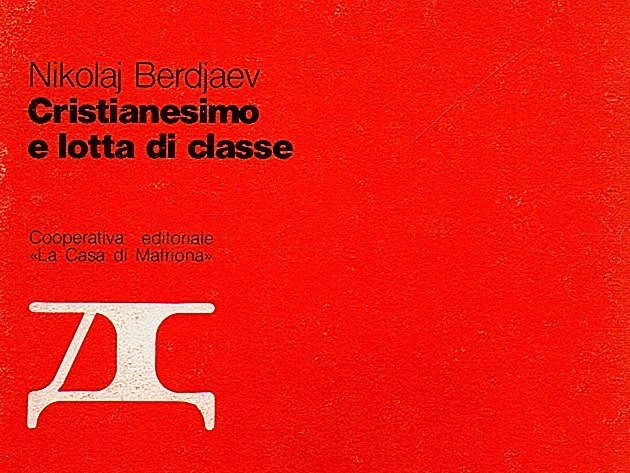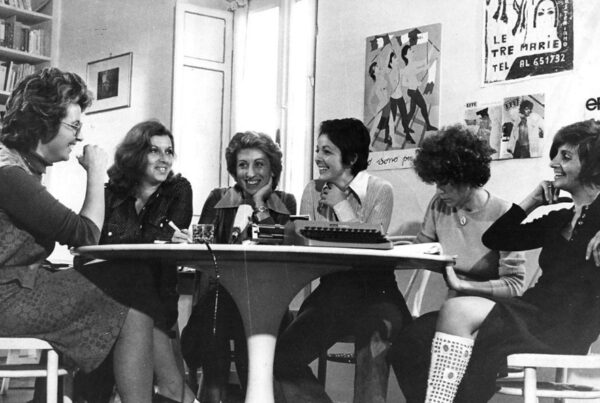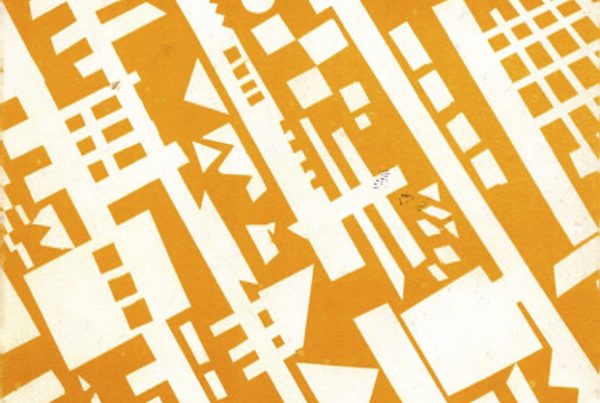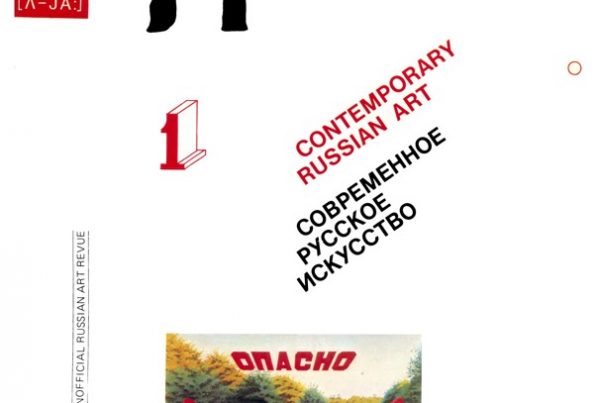
Cover of “Cristianesimo e lotta di classe” by N. Berdiaev, La Casa di Matriona.
Dates: 1976-in activity with new ownership
Place: Milan
Series: Propilei russi, Ricerche, Testimonianze, Quaderni de L’altra Europa, Varia.
Description:
The publishing cooperative La Casa di Matriona was founded in Milan in 1976 on the initiative of some scholars close to the Centro Studi Russia Cristiana. The latter had already been working since 1957, almost uniquely in Italy, to document neglected aspects of religious and ‘dissident’ life in the USSR. The aim of the promoters was to widen the circle of potential readers as much as possible, by attracting non specifically Catholic circles to certain themes and documents of the history and culture of Russia-USSR, only sporadically frequented by publishing houses and the media.
Works published by the small Milanese publishing house have ranged from the religious (the most numerous), to the philosophical, historical, and artistic. Although works of fiction and poetry are almost completely absent, La Casa di Matriona has published several critical essays on literature, some of which of were of great importance. For example, L’altra letteratura (1957-76), Letteratura del samizdat da Pasternak a Solženicyn (The Other Literature (1957-76), The Literature of the Samizdat from Pasternak to Solženicyn) by Iurii Mal’tsev and edited by Lucio del Santo, was published by La Casa di Matriona in 1976, the same year that the Posev publishing house in Frankfurt am Main published the work in Russian with the title Vol’naia russkaia literatura. 1955-1975.
The volume represents one of the first and most detailed studies on the USSR’s clandestine ‘Second Culture’ (or, rather, nepodtsenzurnaia, ‘not submitted to censorship’), examining both the works of established writers such as Pasternak and Solzhenitsyn, and that of authors completely unknown in the West, such as Aleksandr Kondratov, a leading figure of the School of Philologists.
Mal’tsev was a specialist in Italian culture who had extensive contacts with the Moscow underground until his emigration in 1974. He was one of the few Soviet intellectuals to choose Italy as his homeland, where he settled after obtaining political asylum and staying in a refugee camp (cf. Mal’tsev 2015: 155).
Most of La Casa di Matriona’s publications deal with religious subjects (with the rediscovery of important thinkers such as Nikolai Berdiaev, whose volume Christianity and Class Struggle was published in 1977, as well as Michail Gershenzon and Viacheslav Ivanov, with their valuable Correspondence from One Corner to the Other. Twelve Russian Letters, 1976). Another area of interest, which is often linked to the religious one (in the Russia of the time and even more so in the publishing plan of the Milanese publishing house), is the defence of human rights. Perhaps their most important series dedicated to human rights is Testimonianze, which included two volumes dedicated to the Sakharov Tribunal (1976 and 1979), as well as four volumes of interviews, speeches and writings by Aleksandr Solzhenitsyn and a unique text edited by Tat’iana Goricheva entitled The Other Feminism (1983), which reflects on the condition of women from a Christian-Orthodox perspective. Goricheva, one of the editors of the samizdat almanac Zhenshchina i Rossiia and organiser of the famous philosophical-religious seminars in Kurliandskaia Street, was also part of the group that gathered around the magazine “37”,.
Gender issues are also addressed in Tat’iana Shchipkova’s book The Impossible Forgiveness. A Chronicle from a Women’s Lager, published in 1990 in the series Quaderni de L’altra Europa. As part of the same series, Matriona also published Prigionieri politici dell’URSS, 29 biografie e testimonianze (Political Prisoners in the USSR, 29 biographies and accounts) (1977), edited by the journalist Mario Corti, and the short Pazzia di Stato – Prigionieri di coscienza nei manicomi Sovietici (The Madness of the State – Prisoners of Conscience in Soviet Psychiatric Hospitals) (1987), on the widespread practice of confining dissenting thinkers and intellectuals in psikhushki.
In the meantime, between 1981 and 1982 the Cooperative was taken over by the Centre for Christian Russia Studies; in this new context, besides some volumes published in the “Varia” series and dedicated to the figures of Shalamov, Solzhenitsyn and Berdiaev, it is worth mentioning some texts which turned out to be important for mapping the phenomenon of the ‘Second Culture’. These include Samizdat: cronaca di una vita nuova nell’URSS (Samizdat: Chronicle of a New Life in the USSR) (AA. VV., 1977) or the more recent I ragazzi di piazza Majakovskij (The Young Protestors of Maiakovskii Square) (AA. VV., 2002).
Some of the titles mentioned are now out of print, but the six years of independent, self-financed and unpaid activity of the Cooperative – with fifty volumes translated, printed and distributed not only in Lombardy, but also in half of the Italian regions and still present in many libraries today, constitute a small achievement, in the very spirit, against all the passivity and censorship, of the democratic movement and the samizdat in Russia.
Federico Iocca
[30th June 2021]
Translation by Marta Capossela
Bibliography
- Mal’tsev, Iu., I dissidenti sovietici in Italia, “Enthymema”, XII (2015): 155-159.
To cite this article:
Federico Iocca, Federico Iocca, in Voci libere in URSS. Letteratura, pensiero, arti indipendenti in Unione Sovietica e gli echi in Occidente (1953-1991), a cura di C. Pieralli, M. Sabbatini, Firenze University Press, Firenze 2021-, <vocilibereurss.fupress.net>.
eISBN 978-88-5518-463-2
© 2021 Author(s)
Content license: CC BY 4.0




